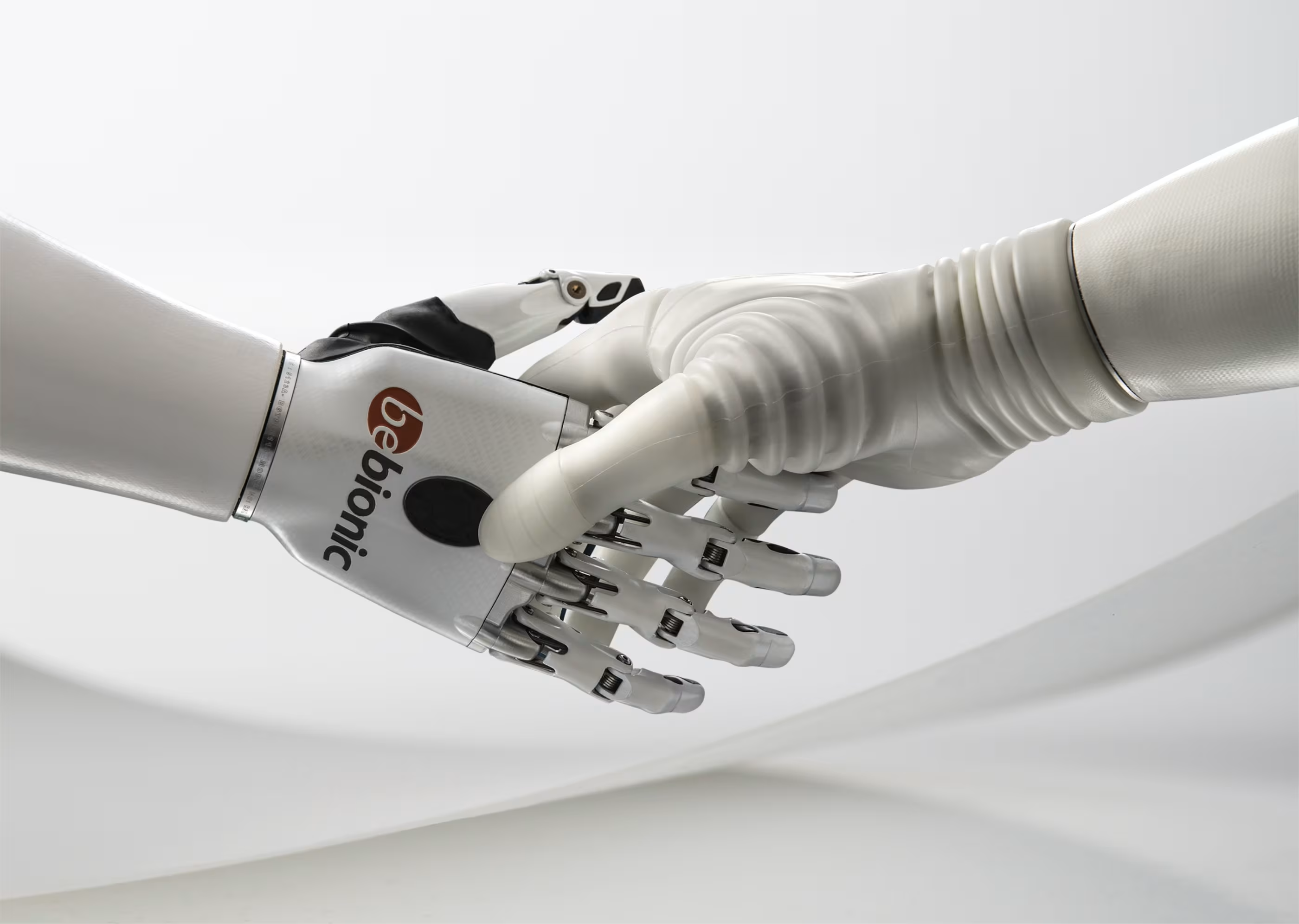


TMR (Targeted Muscle Reinnervation)
The goal of a TMR fitting is to enable arm amputees to use their prosthesis intuitively. For this purpose, nerves that transmitted signals to the natural arm are connected to other muscles.
The goal of a TMR fitting is to enable arm amputees to use their prosthesis intuitively. For this purpose, nerves that transmitted signals to the natural arm are connected to other muscles.
What is TMR?
After the amputation of an arm, the nerves are still functional up to the amputation site. These nerves can generally integrate themselves into a different muscle and trigger a contraction. The concept of TMR is based on triggering a natural repair mechanism artificially. Thus, a muscle that is no longer functional after the amputation is divided into several segments surgically.
The original nerve supply for this muscle is severed. The surgically relocated nerve ends become incorporated into the muscle. This process of establishing a targeted new connection is called targeted reinnervation.
Complex motor training during the subsequent rehabilitation process ensures that you can activate the reinnervated muscles appropriately and selectively. This creates up to six independent muscle signals that significantly help to improve your control of the prosthesis.
TMR is an established treatment method following amputation of the upper arm or shoulder disarticulation. After a TMR fitting, you control your prosthesis using up to six different thoughts about natural movements. For example, simply think of making a fist or closing your hand, and the corresponding muscle will be activated, with the associated signal then closing the prosthetic hand. This way, several prosthetic movements can be carried out at the same time, quickly and intuitively.

